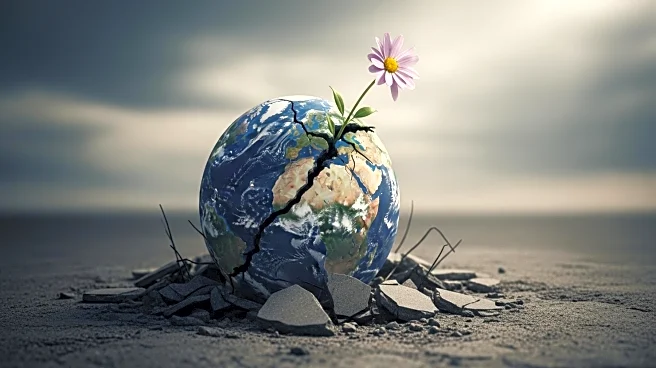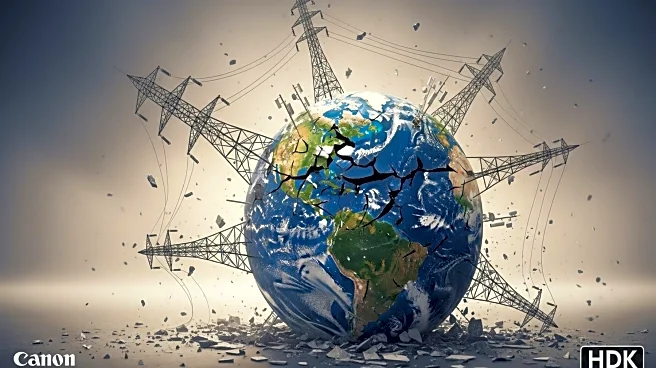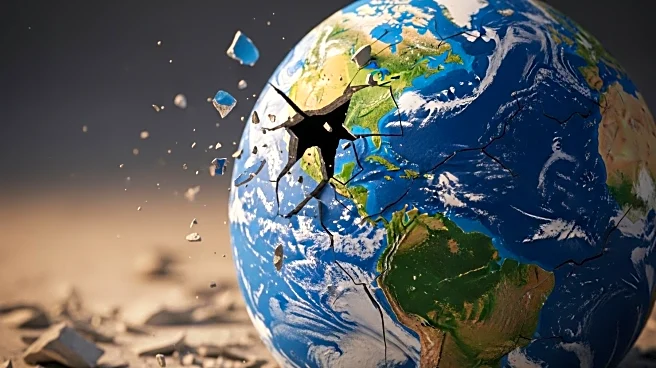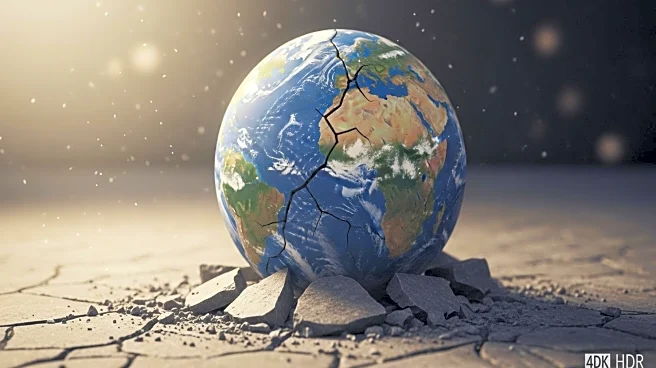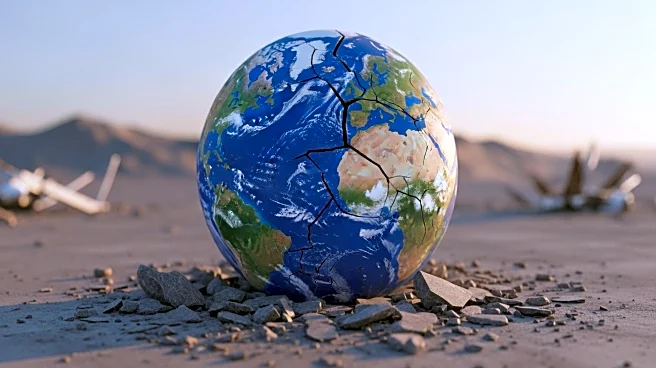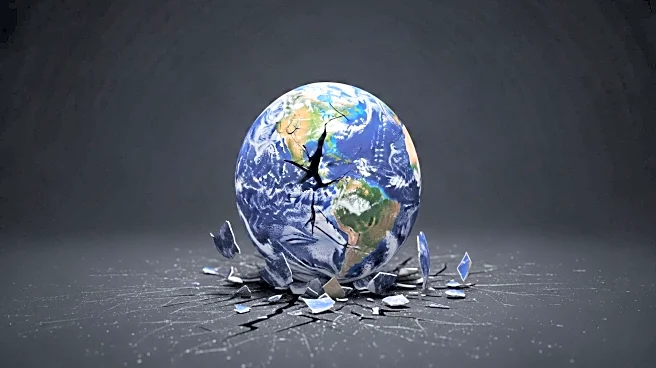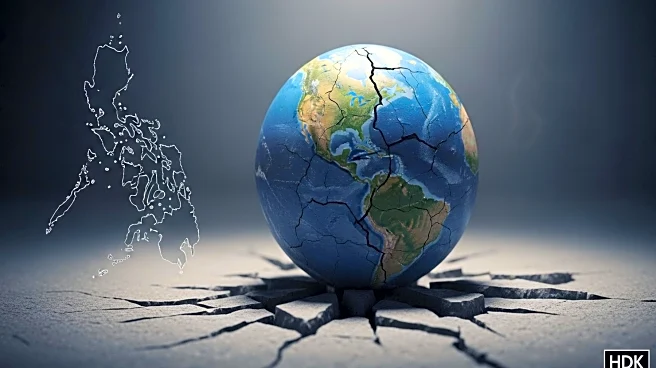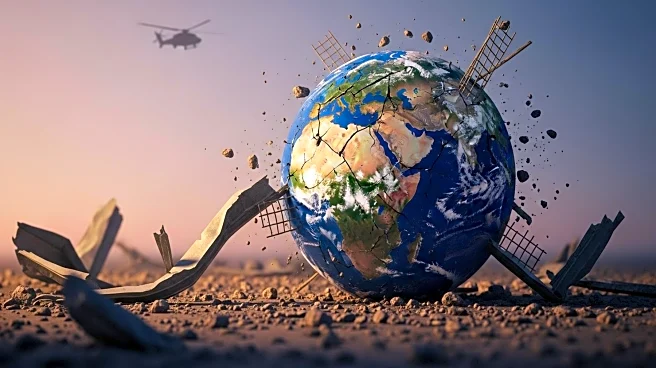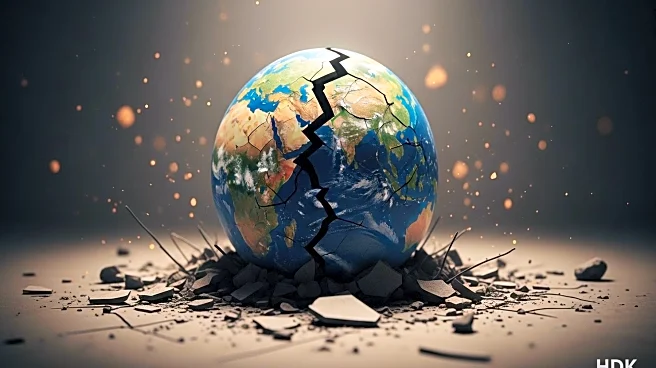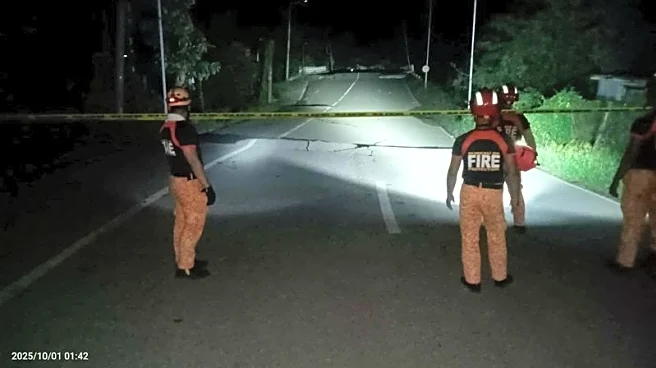What is the story about?
What's Happening?
A powerful magnitude-6.9 earthquake struck the central Philippines late on Tuesday, resulting in at least 69 deaths and numerous injuries. The province of Cebu, particularly the city of Bogo, experienced the most severe impact, prompting local authorities to declare a state of calamity. The earthquake occurred shortly after the region was hit by back-to-back typhoons, exacerbating the situation. Many residents spent the night outdoors due to repeated aftershocks, with power and water supplies disrupted. Emergency services are facing challenges due to damaged infrastructure, including buckled roads and fallen bridges, which hinder access to affected areas.
Why It's Important?
The earthquake's impact on Cebu province highlights the vulnerability of the region to natural disasters, especially following recent typhoons. The declaration of a state of calamity allows for the mobilization of resources and aid to assist affected communities. The disaster underscores the need for improved infrastructure and emergency preparedness in the Philippines, a country frequently affected by seismic activity and severe weather events. The loss of life and damage to property will have significant social and economic repercussions, affecting local communities and potentially requiring international assistance.
What's Next?
Authorities are prioritizing search and rescue operations, aiming to restore electricity and deliver relief supplies to those affected. The ongoing aftershocks pose a continued risk, and structural assessments are being conducted to ensure safety. The local government has appealed for volunteers with medical expertise to aid in treating injuries. As the situation develops, further international aid may be sought to support recovery efforts. The focus will be on rebuilding infrastructure and providing support to displaced residents, particularly those in temporary housing following previous disasters.
Beyond the Headlines
The earthquake has cultural implications, as Cebu is home to many historical sites, including old churches that have suffered damage. The archbishop has advised against visiting these sites until structural assessments are completed. This event may prompt discussions on preserving cultural heritage while ensuring public safety. Additionally, the disaster highlights the ongoing challenges faced by communities recovering from previous calamities, such as Typhoon Haiyan, and the need for sustainable development practices to mitigate future risks.
AI Generated Content
Do you find this article useful?
